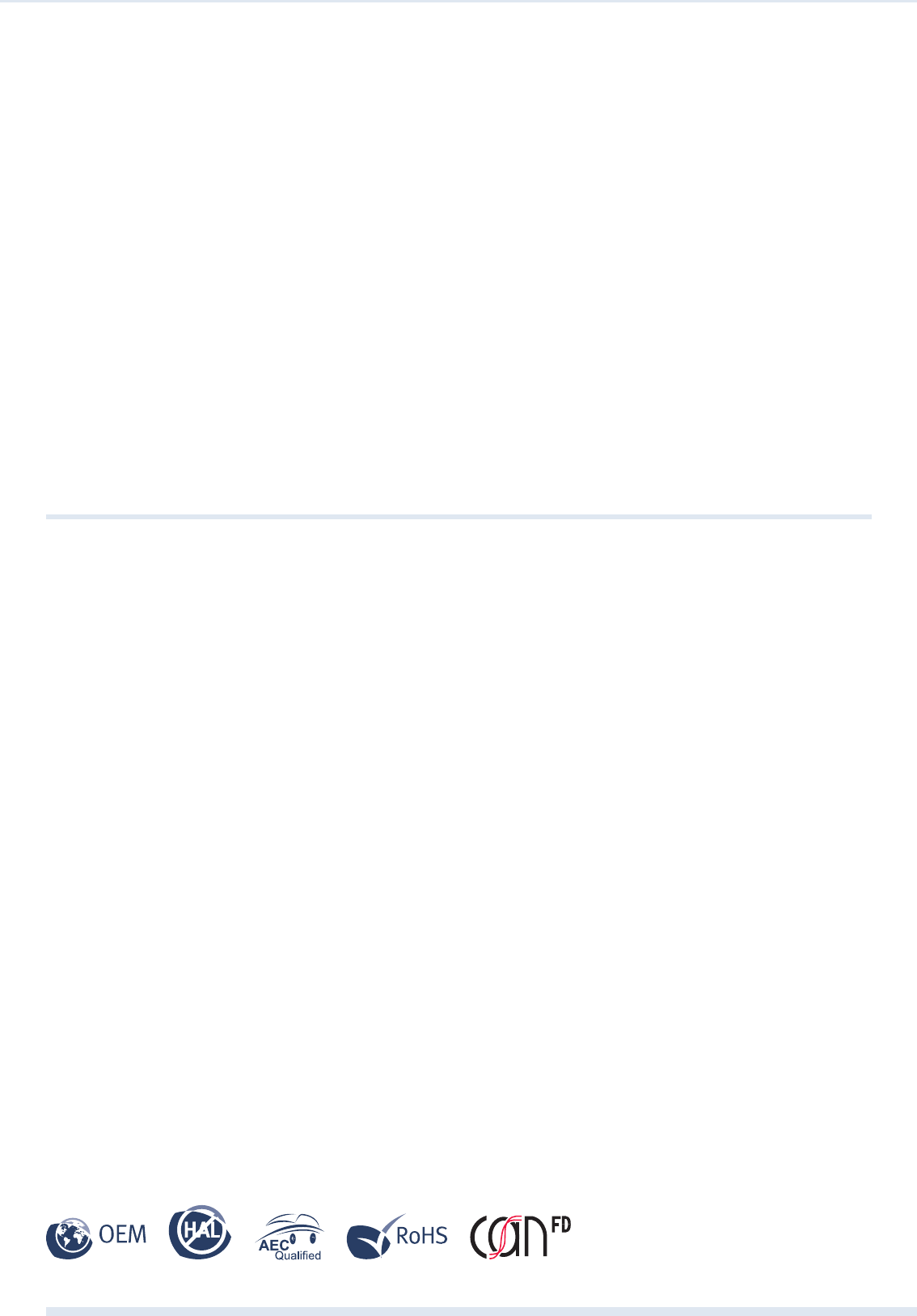Table Of Contents
- Typical Body Applications
- Typical Powertrain Applications
- Typical Safety Applications
- Automotive MOSFETs
- Small Signal MOSFETs
- Power MOSFETs
- TEMPFET™: Temperature Protected Switches
- HITFET™: Low-Side Protected Switches
- Smart Multichannel Switches
- PROFET ™: Smart High-Side Switches
- SPOC™: SPI Power Controller
- Infineon® Auto LED Driver
- Motor Drivers
- Power Supply
- Automotive Transceivers
- System Basis Chips (SBCs)
- Powertrain System ICs
- Restraint System ICs
- Glossary
- Packages

96
System Basis Chips (SBCs)
www.infineon.com/sbc
Features
Low-drop voltage regulator (5V or 3.3V up to 250mA)
Low-drop voltage regulator (5V up to 100mA), robust
against short to V
S
Voltage regulator (5V, 3.3V or 1.8V) with external PNP
transistor, robust against short to V
S
High-speed CAN transceiver ISO 11898-2/-5/-6: suitable
for chokeless operation up to 500kbit/s
High-speed CAN transceiver supporting CAN FD
communication up to 2Mbit/s featuring CAN Partial
Networking FD Tolerant mode
1)
Two LIN transceivers LIN2.2/J2602
Four high-side outputs 7Ω typ., two HV GPIOs and three
HV wake inputs
Watchdog, cyclic sensing, interrupt and reset output
Integrated fail-safe functions: 3 fail-safe outputs,
Watchdog, fail-safe operating modes
Voltage, current and temperature protection and
monitoring
Fully compliant to “Hardware Requirements for LIN,
CAN and FlexRay Interfaces in Automotive Applications”
Revision 1.3, 2012-05-04
Applications
Body control modules
Gateway
Climate control
Seat control
Door control and closures
Light control modules
Engine management systems
The Mid-Range SBCs Family
Mid-Range SBC family oers a high level of integration,
performance and scalability. Up to three low-drop voltage
regulators with 5V or 3.3V output voltage, one HS CAN
(including partial networking and flexible data-rate) and
up to two LIN transceivers complying with the latest
automotive standards and OEM requirements.
The devices include fail-safe features to support ECU
functional safety concept like under-voltage monitoring,
window watchdog with reset, fail-safe operating mode,
fail-safe outputs. There are also available four high-side
switches to drive external loads, wake-inputs and general
purpose input-outputs (GPIOs) to monitor inputs or
activate loads. Mid-Range SBCs oer low-power modes
in order to support applications that are connected
permanently to the battery. All devices feature an exposed
pad PG-VQFN-48 (7mm x 7mm) power package (support-
ing Automatic Optical Inspection). The entire family is
pin-to–pin and soware compatible and is designed to
withstand the severe conditions of automotive applications.
1) The CAN FD requirements for Transceiver are not finalized. All statements regarding CAN FD
are therefore based on Infineon’s today’s knowledge and expectation on the future CAN FD
standard currently being worked out.










